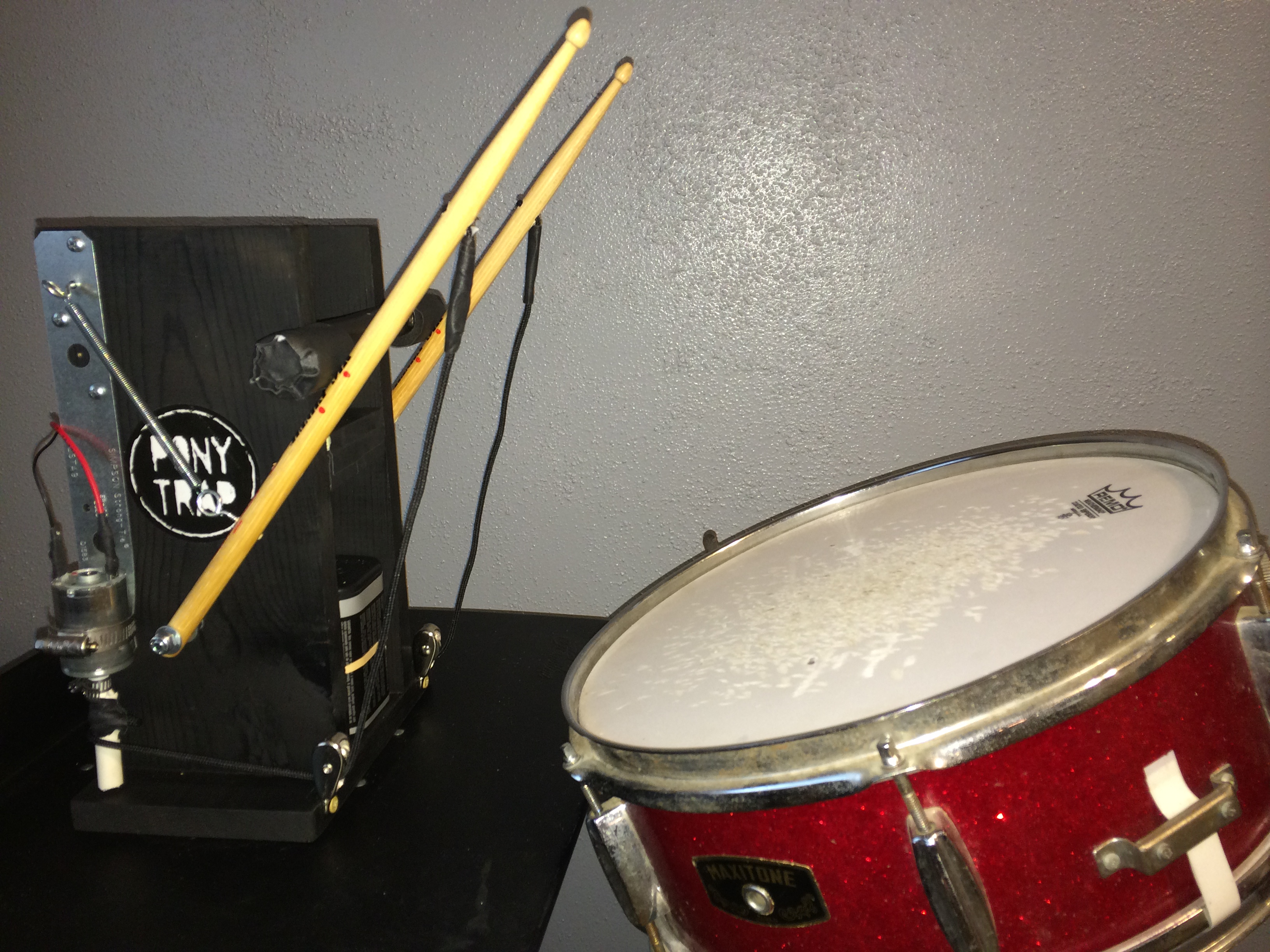
Everyone has a Maker in them. We make for fun and exploration, we make to test ideas, and we make to solve real-world problems. Ponytrap wasn’t intended to be a Maker band — we just seemed to have a difficult time finding a drummer that wanted to play the classically-inspired tribal rhythm industrial music that we wanted to do. In retrospect, maybe that’s not a surprise, but at one point a couple of years ago, Quentin found himself stuck in the middle of a seemingly endless free-form jazz odyssey, and the idea to build his own drummer just kind of materialized. After several evolutions, dozens of burned out motors, and a lot of trial and error, Ponytrap has a solid drumline made entirely of robots.

Our construction ethos is hand tools and off-the-shelf parts. Nothing about our machines needs to be custom built or ordered from a specialty warehouse. So, we wanted this project to work on the same principals. You can obtain everything in the parts list from a retail store and build the entire thing with the simple toolkit pictured in the first step. At the end of the day, you’ll have an Arduino controlled drumming robot that can play complex beats and will always show up to rehearsal.
After we’ve finished building the drum robot, you can find the software to create a version of this beat for your machine in Appendix B.
The Concept
For Ponytrap’s machines, a big part of our aesthetic was to make the drum both physically and visually satisfying. It may be more simple to use smaller, faster actuators, but we really like to see, hear, and feel the drums beating away! Our big machines are fun to watch and they pound as hard as a human drummer. The smaller version for this project hits solidly and has a great visual as well.

This drumming robot consists of two drumsticks controlled by an Arduino, and all of the beats will be written directly into the software of the Arduino. The drivetrain operating the drumsticks functions by turning a spindle/driveshaft which pulls a string that draws the drumstick down to the surface for a strike. After the strike, a return spring will draw the drumstick up while unwinding the spindle to be ready for another strike. The motors are turned on and off by the Arduino via TIP120 transistors and powered by 6-volt lantern batteries wired in series to 12-volts. For our demonstration, we used a snare drum that we had on hand, but any drum is suitable; if you do not have drums handy, plastic buckets make excellent substitutes.
Ponytrap brought their drumming robot to the Austin Mini Maker Faire. Learn more about it here!



